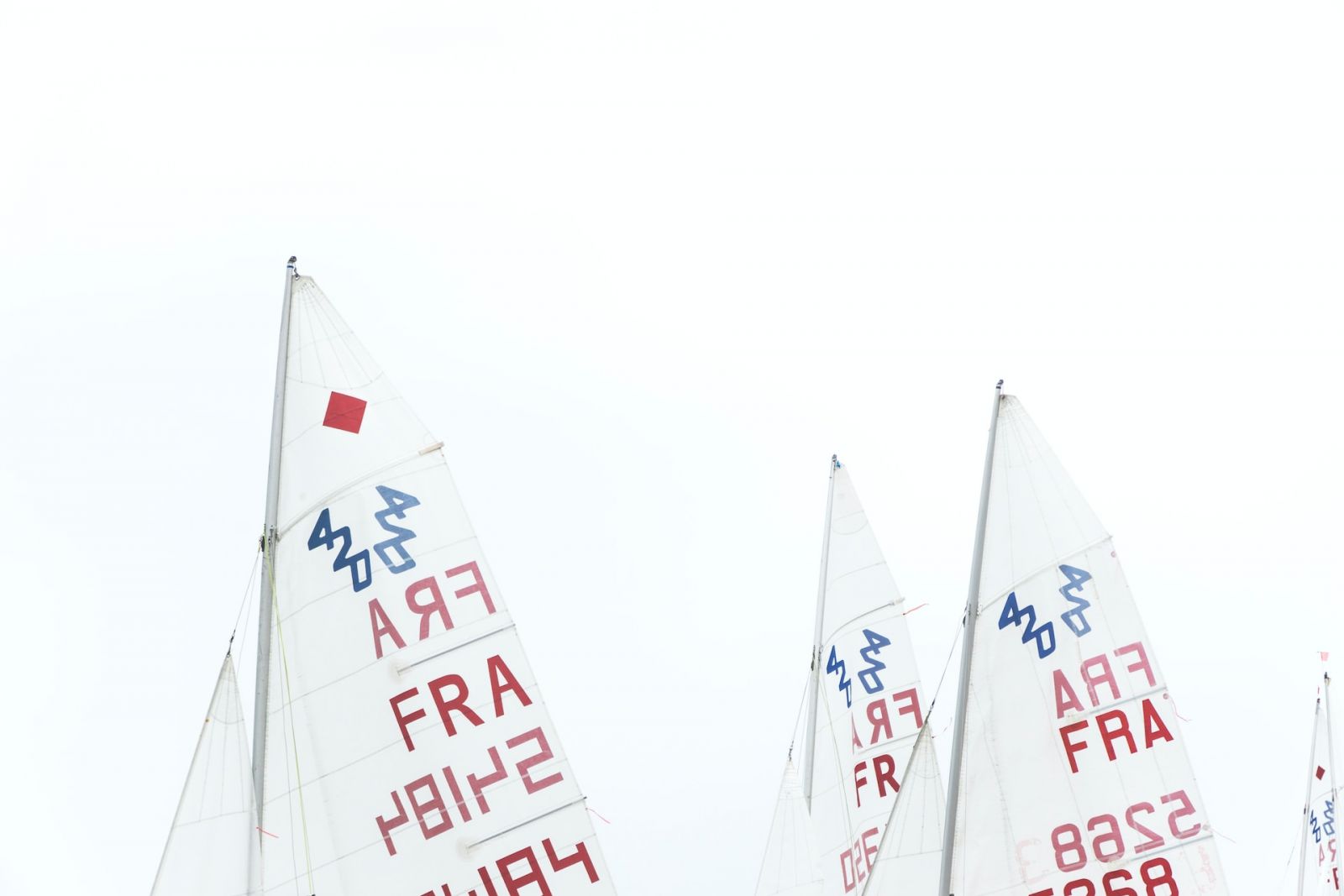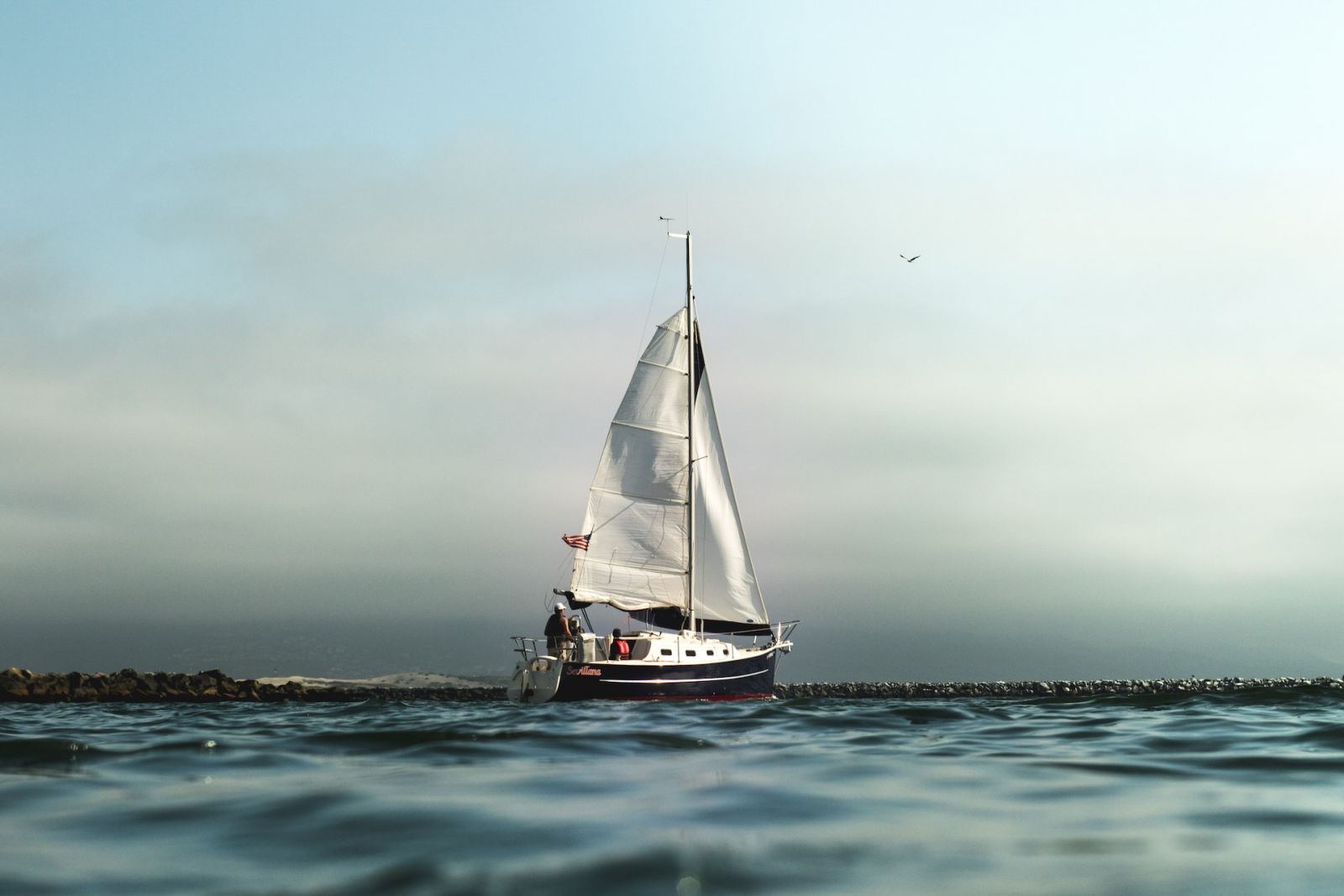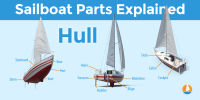Laser Telltale Placement: Get It Perfect This Way
Sailing is all about mastering the wind, and one critical tool you have is properly placing your telltales. These small pieces of fabric or yarn provide valuable information about the airflow, allowing you to make adjustments for smoother, faster sailing. Discover the perfect placement in this article.
Position the laser telltale on the leeward side of the sail, where it will be most visible and responsive to changes in wind direction. You can place multiple telltales along the sail's edges to help gauge airflow. This will allow you to better interpret the wind's behavior and make adjustments to optimize performance.
Take the time to understand what your telltales are telling you, as they may vary depending on factors like wind conditions or boat angle. The more you use your telltales and get a feel for what they are showing you, the better sailor you'll become.
Summary
- Measure and place your telltales according to the specific rig you have, such as a full rig, a radial rig, or a 4.7 Rig.
- Consider attaching leech telltales along the leech, starting near the top batten pocket and moving down.
- Keep experimenting and fine-tuning your laser telltale placements to find what works best for you and your sailing conditions.
- The telltales should flow smoothly and consistently to indicate that the airflow is optimal.
- If the telltales are fluttering or not flowing smoothly, it indicates that the sail is not trimmed correctly and adjustments need to be made.

On this page:
Perfect Placement of Your Laser Telltale
For optimal boat speed and performance, here's a step-by-step guide to the perfect placement of a laser telltale:
-
Determine the wind direction: Before placing the laser telltale, you need to know the direction of the wind. You can use a wind vane or a weather app to determine wind direction.
-
Choose the sail telltale location: The sail telltale should be placed on the jib or mainsail, on the leeward side of the boat. The location should be chosen based on the wind direction and the sail trim.
-
Attach the laser telltale: Attach the laser telltale to the sail using a small piece of tape or a clamp. Make sure it is securely attached and won't come loose during sailing.
-
Adjust the laser telltale: Turn on the laser pointer and aim it at the mirror. Adjust the laser pointer so that it hits the mirror and reflects back to the sail telltale. Adjust the mirror and the laser pointer until the laser telltale is visible and accurate.
-
Test the laser telltale: Turn on the lights and check that the laser telltale is visible and accurate. If it's not, adjust the mirror or the laser pointer until it is.
-
Fine-tune the sail trim: Once the laser telltale is in place, you can use it to fine-tune the sail trim. The laser telltale should be parallel to the wind, indicating that the sail is properly trimmed.
-
Monitor the laser telltale: Keep an eye on the laser telltale while sailing. If it starts to flutter or move erratically, it may indicate a change in wind direction or sail trim.
Tips and Tricks for Perfect Laser Telltale Placement

Achieve perfect laser telltale placement and optimize your sail trim for better performance and speed with these tips and tricks:
-
Use a small mirror: The mirror used for the laser telltale should be small and lightweight. This will make it easier to adjust and ensure that it won't affect the sail trim.
-
Choose the right location: The laser telltale should be placed on the leeward side of the sail, where it will be most visible and accurate. Choose a location that is easy to access and won't affect the sail trim.
-
Use a strong attachment: The laser telltale should be securely attached to the sail using a strong tape or clamp. Make sure the attachment is tight and won't come loose during sailing.
-
Test in different sailing conditions: Test the laser telltale in different wind and sailing conditions to ensure it is accurate and visible. Make adjustments as needed to achieve optimal sail trim.
-
Monitor the sail telltale: Keep an eye on the laser telltale while sailing to ensure it remains accurate and visible. If it starts to flutter or move erratically, it may indicate a change in wind direction or sail trim.
-
Keep it simple: The laser telltale should be a simple and easy-to-use tool for achieving optimal sail trim. Don't overcomplicate the placement or use of the laser telltale.
Importance of perfect placement
Having the perfect placement for your Laser telltales is essential for optimizing your sailing performance. To ensure optimal Velocity Made Good (VMG) and airflow, it is vital to place your telltales accurately on the sail. Properly positioned telltales can provide crucial information about the airflow and help you maintain the best angle while sailing upwind.

Historical perspective on laser telltale placement
The practice of using laser telltales has evolved over the years. Initially, telltales were placed in various positions, often near the leech or a batten pocket. However, after considerable experimentation and experience, techniques have improved, and many sailors now prefer a triangular formation.
This triangular arrangement helps average the disturbed air and provides a more accurate reading of the airflow. Moreover, it is crucial to have this formation visible to the sailor so he can make adjustments accordingly.
Measurements for placement of laser telltale
Place telltales on the sail's leech and foot. The placement of the telltales can vary, but typically there are two telltales on the leech and one telltale on the foot. The distance of the telltales from the mast or luff wire can also vary, but they should be placed in a way that allows for a clear view of the telltales and proper airflow measurement. A general guideline is to place them no closer than one-third of the sail's width from the mast or luff wire.
Identifying potential placement points
In addition to the placement mentioned above, don't forget to utilize leach telltales as well. These telltales indicate when the sail is stalled or on the edge of stalling. Luff telltales placed strategically at different heights can help you balance the fullness throughout the height of the sail. Some boats even offer an in-haul control to adjust the fullness near the mast.
Fine-Tuning Your Laser Telltale Placement

Dealing with different sailing conditions
When sailing in light air, it's essential to make sure your telltales are responding correctly. To do this, you can try placing them slightly lower on the sail, closer to the luff, so they're more sensitive to the airflow. In heavier winds, you'll need your telltales to be more durable. You can place them higher on the sail, further from the luff, to ensure they don't get damaged during more intense sailing conditions.
Remember that your telltales' responsiveness is critical for accurate feedback, so keep an eye on them while sailing and make adjustments as needed.
Adjustments for different laser models
Each laser sail model, including the Full Rig, Radial, and 4.7 Rig, requires different telltale placements. Here's a guide to help you find the perfect telltale placement for your specific sail:
- Full Rig: Place your telltales 31" up, 23" in from the luff, and 60" up, 17" in from the luff.
- Radial: For this model, position the telltales 31" up, 20" in from the luff, and 53" up, 20" in from the luff.
- 4.7 Rig: Telltales should be placed at 27" up, 19" in from the luff, and 47" up, 15" in from the luff.
Troubleshooting Common Laser Telltale Placement Issues

Troubleshooting laser telltale placement issues may require some trial and error. It's a good idea to test the laser telltale in different sailing conditions and make adjustments as needed. With some patience and persistence, you should be able to resolve any issues and achieve optimal sail trim with your laser telltale.
-
Optimum angle misjudgment: If the laser telltale is misaligned, it may not accurately show the sail trim. To troubleshoot this issue, adjust the mirror and the laser pointer until the laser telltale is parallel to the wind. Make sure the mirror and the laser pointer are securely attached to the sailboat and won't move during sailing.
-
Unstable attachment: If the laser telltale is not securely attached to the sail, it may come loose during sailing. To troubleshoot this issue, use a stronger tape or clamp to attach the laser telltale to the sail. Make sure the attachment is tight and won't come loose during sailing.
-
Optimal visibility issues: If the laser telltale is not visible or accurate, it may be due to poor lighting conditions or an obstructed view. To troubleshoot this issue, test the laser telltale in different lighting conditions and adjust the mirror and the laser pointer until it is visible and accurate. Make sure there are no obstructions blocking the view of the laser telltale.
Did you find the answer to your specific question?
👍 0 👎 1



Leave a comment